Abstract
1. Afferent activity of 111 single units from the glabrous skin area was recorded percutaneously in the median nerve of human subjects, using tungsten electrodes. 2. The majority of the units (103) were classified as low-threshold mechano-sensitive units belonging to one of the four categories previously described: rapidly adapting with small receptive fields (RA), rapidly adapting with large receptive fields (PC, presumed Pacinian corpuscle units), slowly adapting with small fields (SA I), and slowly adapting with large fields (SA II). The size of the responses (in number of impulses) to indentation and stretching of the skin was compared with that of the responses elicited during voluntary isotonic finger movements, which avoided trivial excitation of the units by direct touch. 3. All four types of units, and 77% of the single units, were activated by isotonic movements. The decreasing order of responsiveness was PC, SA II, SA I, RA. 4. Almost all responsive units were excited during the dynamic phase of ramp and smooth oscillatory movements. Static responses, on the other hand, occurred only with 50% of the slowly adapting units, corresponding to a third of the total sample (SA II, 81%; SA I, 17%. 5. For all four types of units the dynamic responses to movements were of similar size as the responses to localized skin indentation with a von Frey hair at five times threshold. 6. The results are discussed with regard to the possible implications for kinaesthesia and motor control.
Full text
PDF
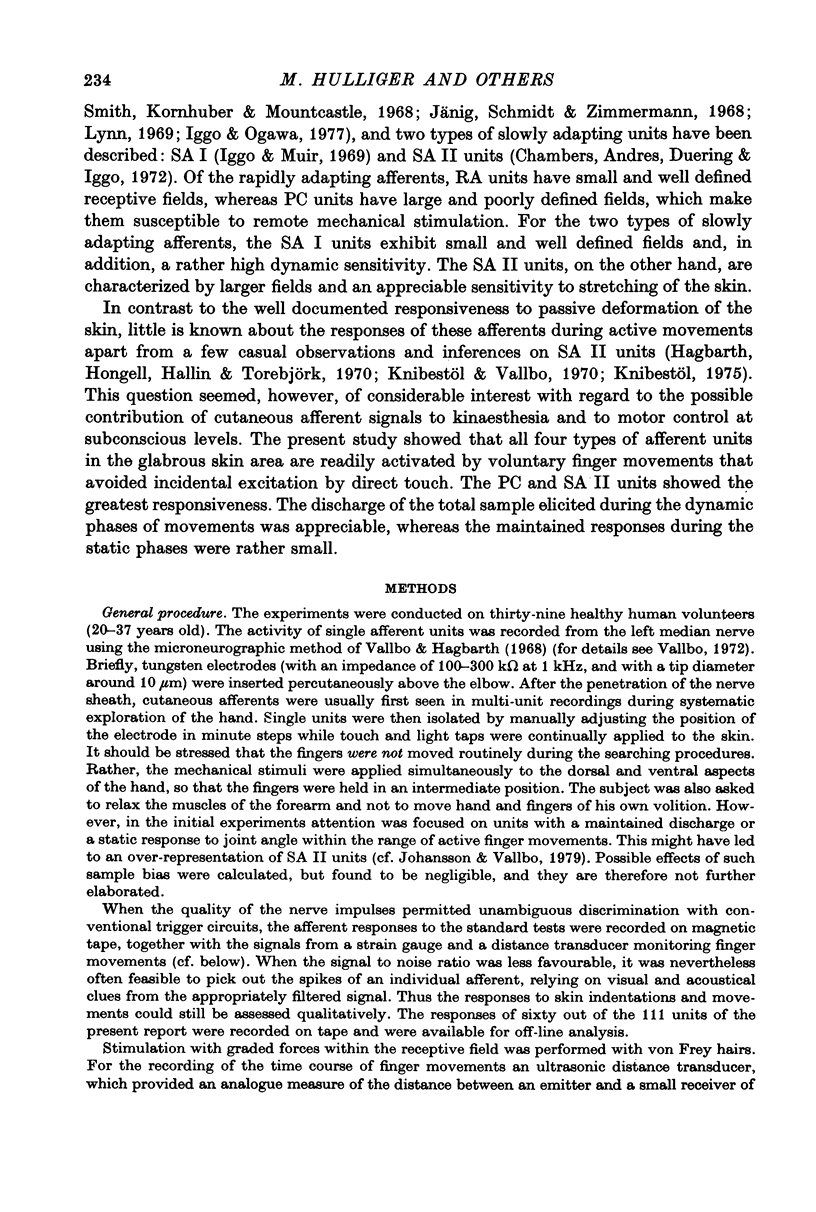

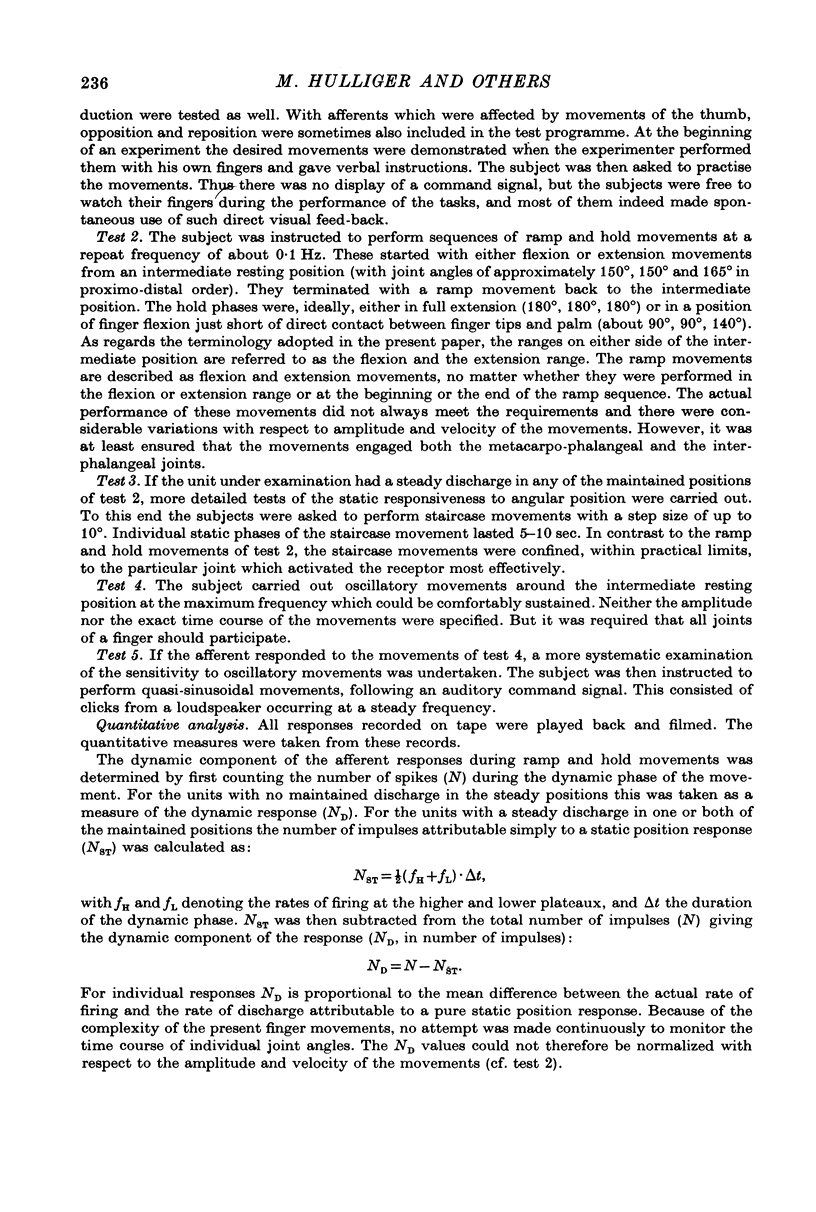
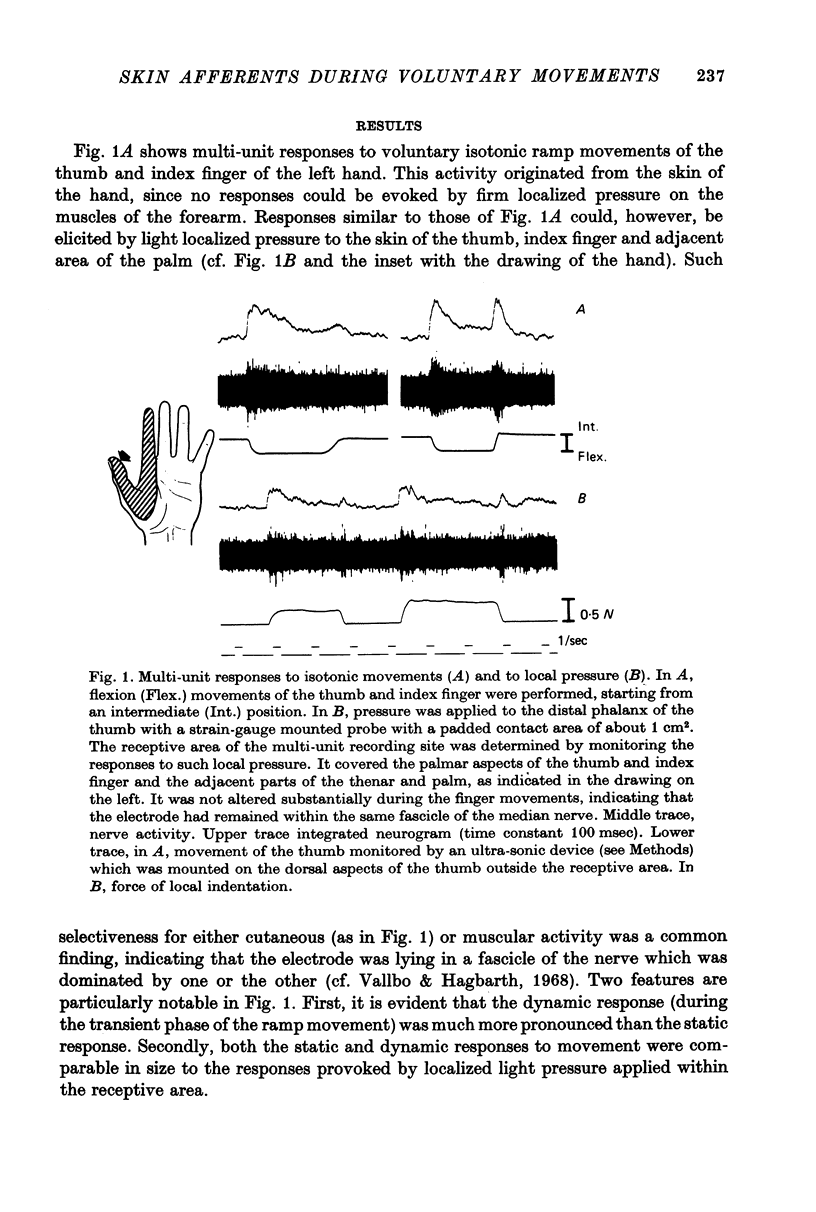


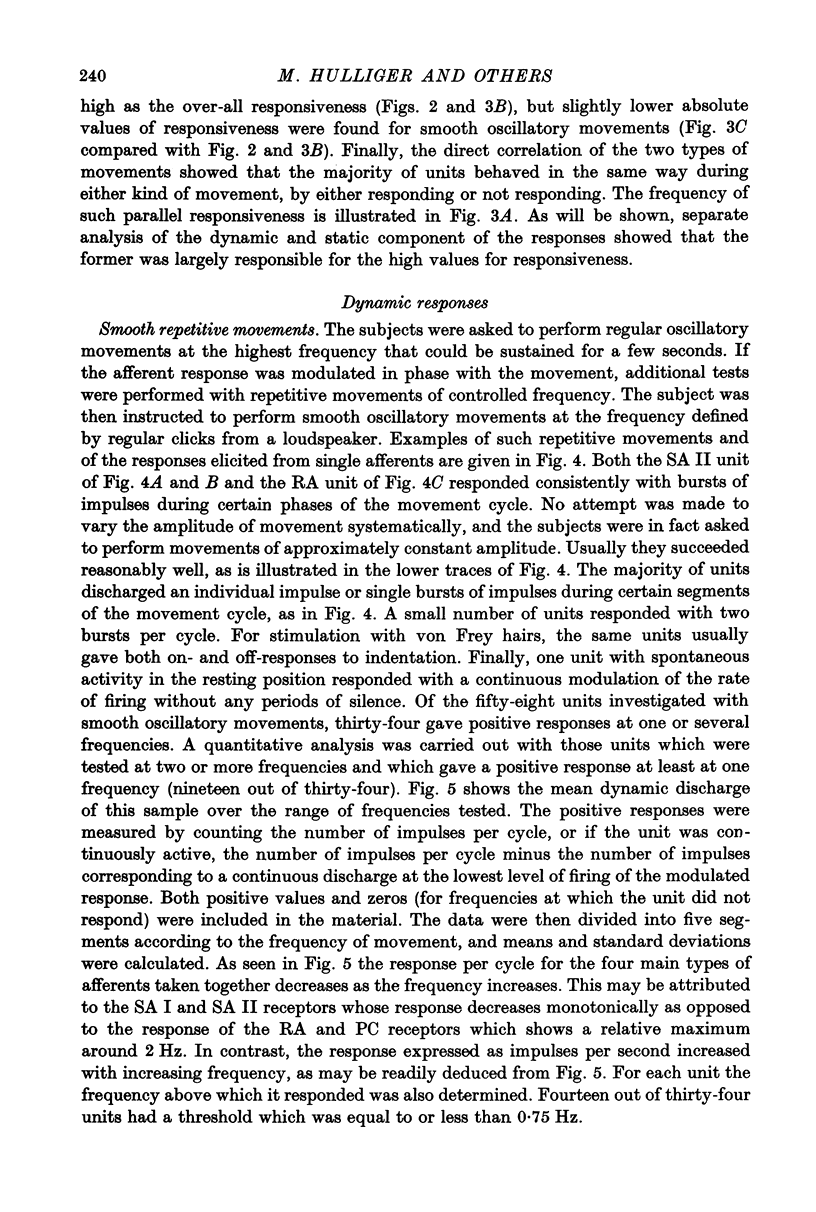
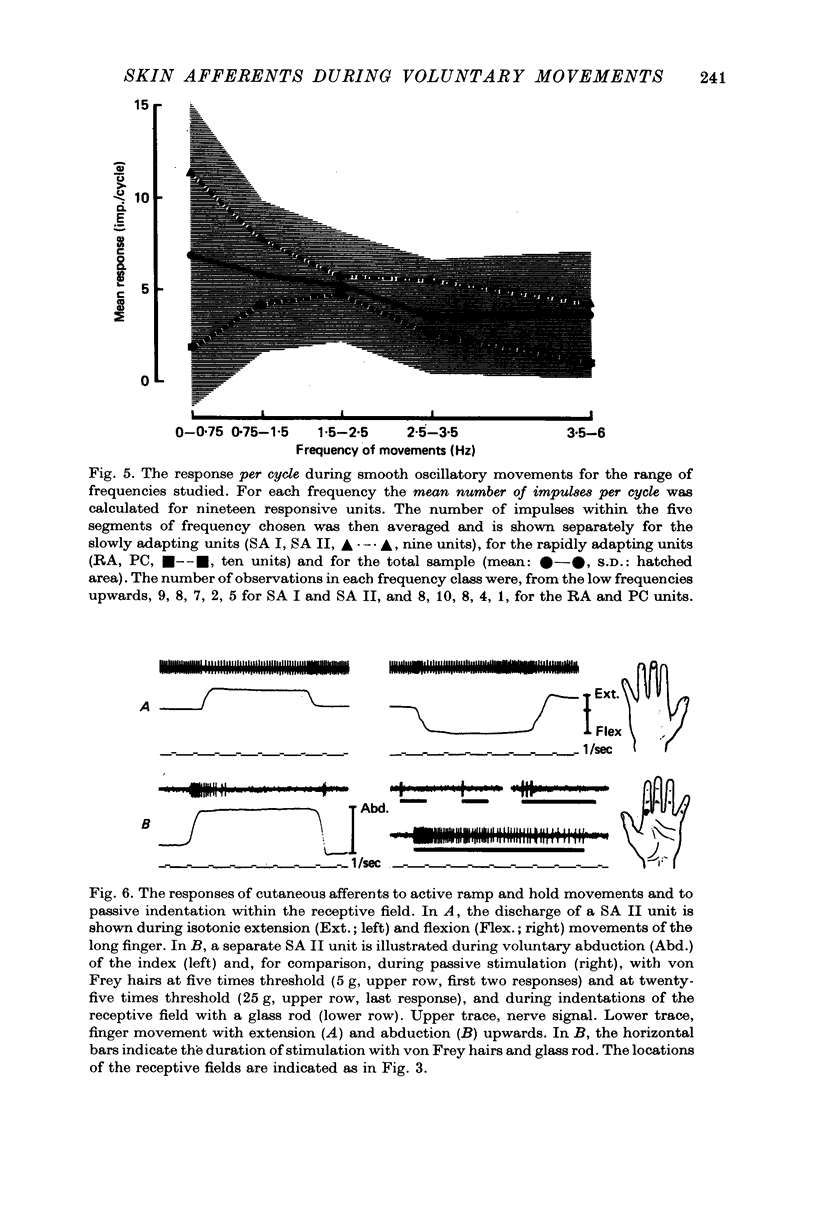
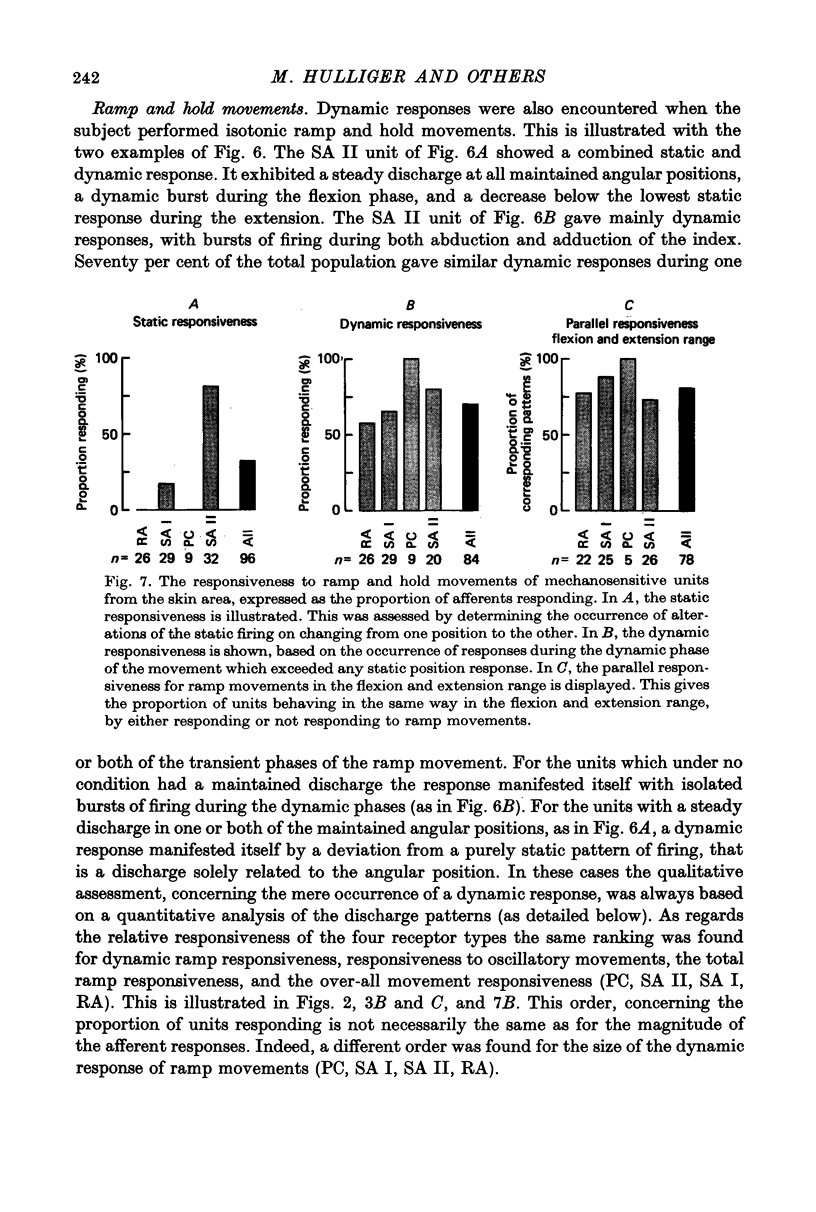
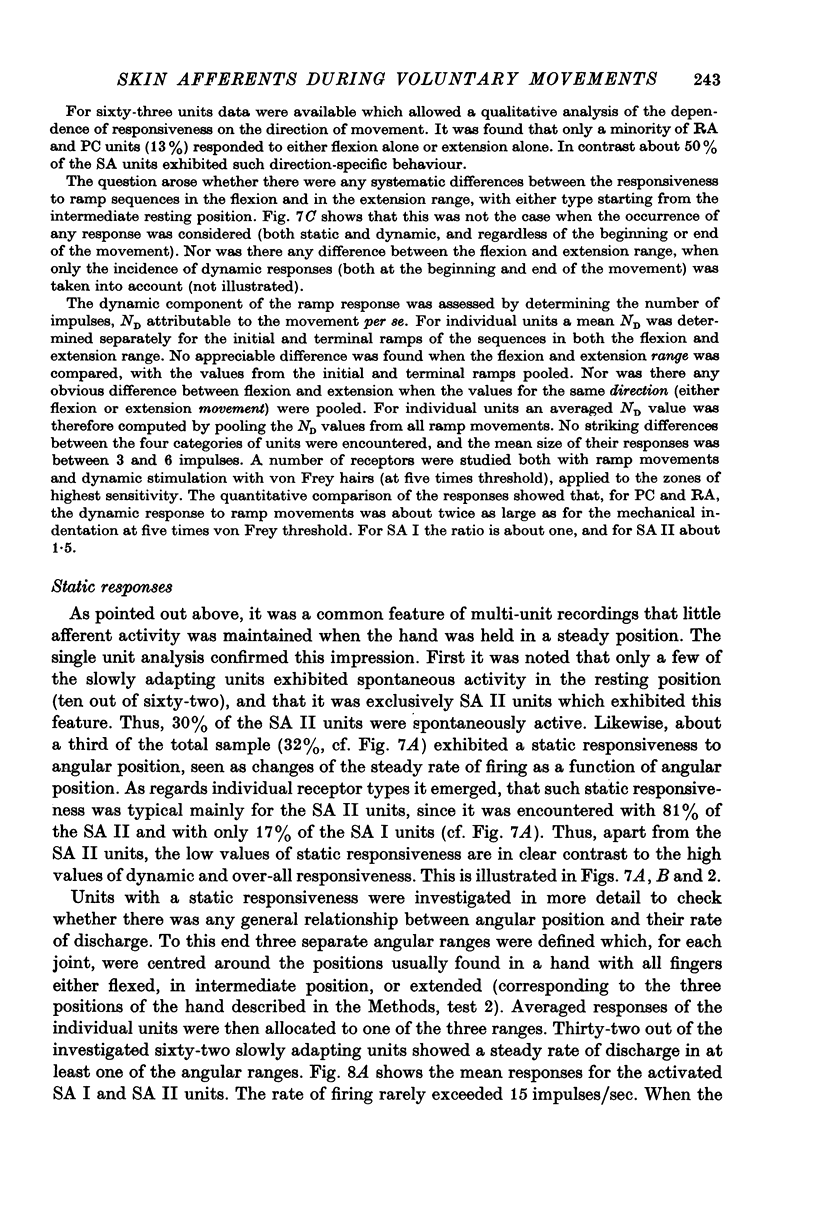


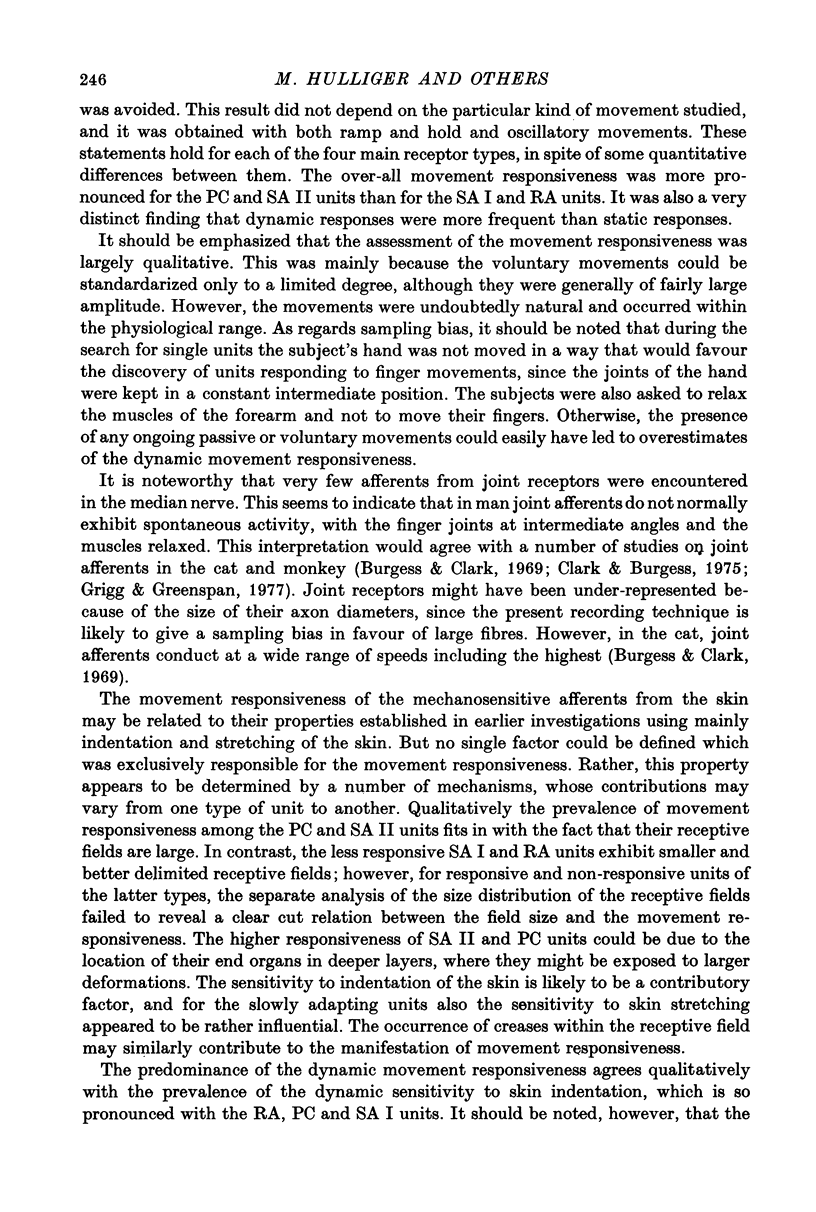
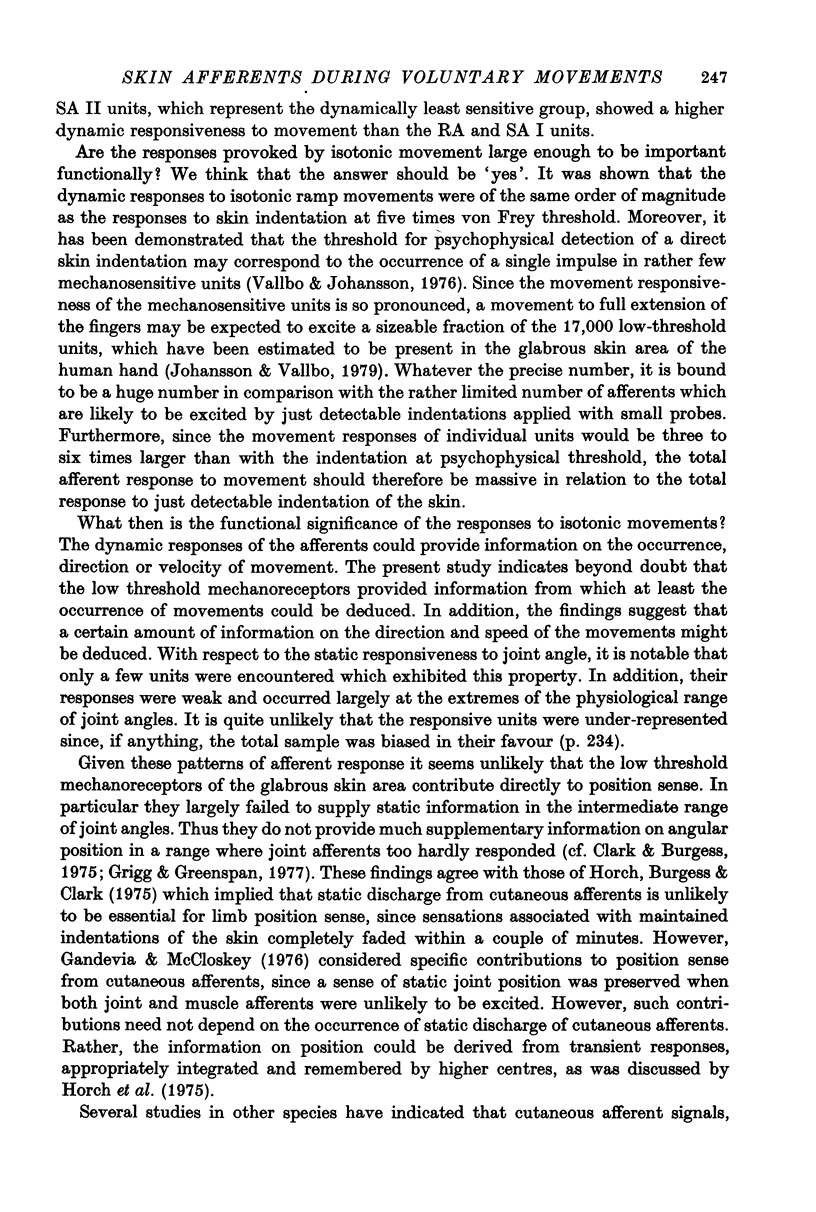


Images in this article
Selected References
These references are in PubMed. This may not be the complete list of references from this article.
- Burgess P. R., Clark F. J. Characteristics of knee joint receptors in the cat. J Physiol. 1969 Aug;203(2):317–335. doi: 10.1113/jphysiol.1969.sp008866. [DOI] [PMC free article] [PubMed] [Google Scholar]
- Chambers M. R., Andres K. H., von Duering M., Iggo A. The structure and function of the slowly adapting type II mechanoreceptor in hairy skin. Q J Exp Physiol Cogn Med Sci. 1972 Oct;57(4):417–445. doi: 10.1113/expphysiol.1972.sp002177. [DOI] [PubMed] [Google Scholar]
- Clark F. J., Burgess P. R. Slowly adapting receptors in cat knee joint: can they signal joint angle? J Neurophysiol. 1975 Nov;38(6):1448–1463. doi: 10.1152/jn.1975.38.6.1448. [DOI] [PubMed] [Google Scholar]
- Duysens J. Reflex control of locomotion as revealed by stimulation of cutaneous afferents in spontaneously walking premammillary cats. J Neurophysiol. 1977 Jul;40(4):737–751. doi: 10.1152/jn.1977.40.4.737. [DOI] [PubMed] [Google Scholar]
- Forssberg H., Grillner S., Rossignol S. Phasic gain control of reflexes from the dorsum of the paw during spinal locomotion. Brain Res. 1977 Aug 19;132(1):121–139. doi: 10.1016/0006-8993(77)90710-7. [DOI] [PubMed] [Google Scholar]
- Gandevia S. C., McCloskey D. I. Joint sense, muscle sense, and their combination as position sense, measured at the distal interphalangeal joint of the middle finger. J Physiol. 1976 Sep;260(2):387–407. doi: 10.1113/jphysiol.1976.sp011521. [DOI] [PMC free article] [PubMed] [Google Scholar]
- Grigg P., Greenspan B. J. Response of primate joint afferent neurons to mechanical stimulation of knee joint. J Neurophysiol. 1977 Jan;40(1):1–8. doi: 10.1152/jn.1977.40.1.1. [DOI] [PubMed] [Google Scholar]
- Hagbarth K. E., Hongell A., Hallin R. G., Torebjörk H. E. Afferent impulses in median nerve fascicles evoked by tactile stimuli of the human hand. Brain Res. 1970 Dec 18;24(3):423–442. doi: 10.1016/0006-8993(70)90183-6. [DOI] [PubMed] [Google Scholar]
- Horch K. W., Clark F. J., Burgess P. R. Awareness of knee joint angle under static conditions. J Neurophysiol. 1975 Nov;38(6):1436–1447. doi: 10.1152/jn.1975.38.6.1436. [DOI] [PubMed] [Google Scholar]
- Iggo A., Muir A. R. The structure and function of a slowly adapting touch corpuscle in hairy skin. J Physiol. 1969 Feb;200(3):763–796. doi: 10.1113/jphysiol.1969.sp008721. [DOI] [PMC free article] [PubMed] [Google Scholar]
- Iggo A., Ogawa H. Correlative physiological and morphological studies of rapidly adapting mechanoreceptors in cat's glabrous skin. J Physiol. 1977 Apr;266(2):275–296. doi: 10.1113/jphysiol.1977.sp011768. [DOI] [PMC free article] [PubMed] [Google Scholar]
- Johansson R. S. Receptive field sensitivity profile of mechanosensitive units innervating the glabrous skin of the human hand. Brain Res. 1976 Mar 12;104(2):330–334. doi: 10.1016/0006-8993(76)90627-2. [DOI] [PubMed] [Google Scholar]
- Johansson R. S. Tactile sensibility in the human hand: receptive field characteristics of mechanoreceptive units in the glabrous skin area. J Physiol. 1978 Aug;281:101–125. doi: 10.1113/jphysiol.1978.sp012411. [DOI] [PMC free article] [PubMed] [Google Scholar]
- Johansson R. S., Vallbo A. B. Tactile sensibility in the human hand: relative and absolute densities of four types of mechanoreceptive units in glabrous skin. J Physiol. 1979 Jan;286:283–300. doi: 10.1113/jphysiol.1979.sp012619. [DOI] [PMC free article] [PubMed] [Google Scholar]
- Jänig W., Schmidt R. F., Zimmermann M. Single unit responses and the total afferent outflow from the cat's foot pad upon mechanical stimulation. Exp Brain Res. 1968;6(2):100–115. doi: 10.1007/BF00239165. [DOI] [PubMed] [Google Scholar]
- Knibestöl M. Stimulus-response functions of slowly adapting mechanoreceptors in the human glabrous skin area. J Physiol. 1975 Feb;245(1):63–80. doi: 10.1113/jphysiol.1975.sp010835. [DOI] [PMC free article] [PubMed] [Google Scholar]
- Knibestöl M., Vallbo A. B. Single unit analysis of mechanoreceptor activity from the human glabrous skin. Acta Physiol Scand. 1970 Oct;80(2):178–195. doi: 10.1111/j.1748-1716.1970.tb04783.x. [DOI] [PubMed] [Google Scholar]
- Lindblom U., Lund L. The discharge from vibration-sensitive receptors in the monkey foot. Exp Neurol. 1966 Aug;15(4):401–417. doi: 10.1016/0014-4886(66)90138-5. [DOI] [PubMed] [Google Scholar]
- Lindblom U. Properties of touch receptors in distal glabrous skin of the monkey. J Neurophysiol. 1965 Sep;28(5):966–985. doi: 10.1152/jn.1965.28.5.966. [DOI] [PubMed] [Google Scholar]
- Lynn B. The nature and location of certain phasic mechanoreceptors in the cat's foot. J Physiol. 1969 May;201(3):765–773. doi: 10.1113/jphysiol.1969.sp008786. [DOI] [PMC free article] [PubMed] [Google Scholar]
- Marsden C. D., Merton P. A., Morton H. B. The sensory mechanism of servo action in human muscle. J Physiol. 1977 Feb;265(2):521–535. doi: 10.1113/jphysiol.1977.sp011728. [DOI] [PMC free article] [PubMed] [Google Scholar]
- Mori S., Reynolds P. J., Brookhart J. M. Contribution of pedal afferents to postural control in the dog. Am J Physiol. 1970 Mar;218(3):726–734. doi: 10.1152/ajplegacy.1970.218.3.726. [DOI] [PubMed] [Google Scholar]
- Talbot W. H., Darian-Smith I., Kornhuber H. H., Mountcastle V. B. The sense of flutter-vibration: comparison of the human capacity with response patterns of mechanoreceptive afferents from the monkey hand. J Neurophysiol. 1968 Mar;31(2):301–334. doi: 10.1152/jn.1968.31.2.301. [DOI] [PubMed] [Google Scholar]
- Vallbo A. B., Hagbarth K. E. Activity from skin mechanoreceptors recorded percutaneously in awake human subjects. Exp Neurol. 1968 Jul;21(3):270–289. doi: 10.1016/0014-4886(68)90041-1. [DOI] [PubMed] [Google Scholar]




